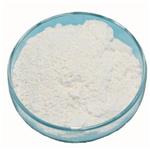Joining maraviroc as a unique approach to battling HIV-1, raltegravir, an
inhibitor of HIV-1 integrase, represents the first in its class to be developed and
launched as a combination treatment with other antiretroviral agents (NRTIs,
NNRTIs, and PIs). HIV-1 integrase is essential for replication of the virus as a
virally encoded enzyme that integrates the viral DNA into the genome of the host
cell. Inhibition of HIV-1 integrase prevents the two-step process of endonucleolytic
removal of the terminal dinucleotide from each 3′end of the viral DNA
followed by the covalent integration of the viral DNA, at these modified 3′ends,
into the host DNA, thereby representing a viable intervention in the viral life
cycle. In vitro, raltegravir inhibited the strand transfer activity of HIV-1 integrase
with an IC50 of 2–7nM with > 1,000-fold selectivity over other phosphoryltransferases.
In addition, its in vitro IC95 for HIV-1 in 10% fetal bovine serum and
50% human serum was 19 and 33 nM, respectively. Raltegravir was well tolerated with no dose-related toxicities and a safety profile comparable to placebo. The most common clinical adverse events were diarrhea, nausea, vomiting, fatigue, headache, flushing, pruritus, and injection-site reactions.





